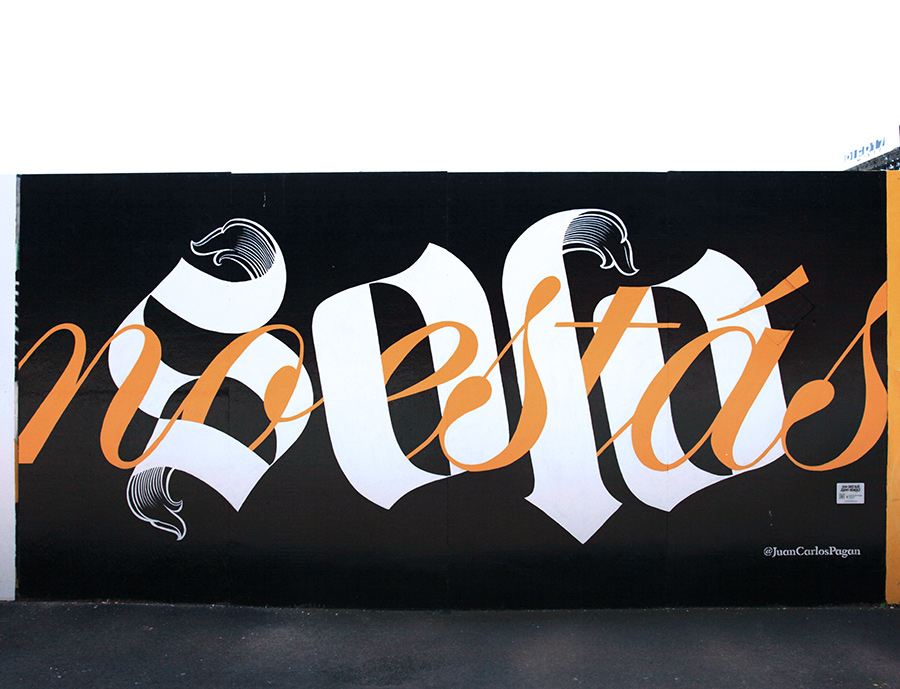When you live in a big city, you are quickly aware that it can be a lonely place, and the feeling of isolation can be very strong, even though you are surrounded by people. When you suffer from a mental illness, that feeling can be compounded. Walls often symbolize division, but street artists and muralists know that their work on walls can often bring city dwellers together, and the “You Are Not Alone” mural project takes that fact and creates an environment of connection and hope.
This non-profit public art initiative has brought artists worldwide to create murals that spark conversations about mental health, fostering a sense of solidarity and community. What began with three murals in Brooklyn in 2019 has slowly grown into a global movement, boasting 65 murals across various continents. With unique style and messaging that reflects our various backgrounds and experiences, it reminds passersby that they are not alone in their struggles.

The origins of the project trace back to co-founder Samantha Schutz’s memoir, “I Don’t Want to Be Crazy,” which details her experiences with anxiety. Drawing from this deeply personal inspiration, the murals are visual testimonials of the power of vulnerability and shared human experience. Artists like Jason Naylor emphasize that “when you walk by a mural, you are involved,” making every viewer participate in an ongoing mental health dialogue. Whether a high school collaboration or a professional installation, each mural is a beacon of empathy and support.
Special projects have further cemented the impact of this initiative. In New York City, a 160-foot collaborative mural at The Seaport, art installations at NAMI Walks, and partnerships with organizations like Priority Bicycles for a postcard campaign have amplified the reach and resonance of the murals. These efforts not only claim urban spaces but also create inclusive environments where mental health conversations are encouraged and destigmatized.

The 2024 mural collection continues the tradition, showcasing diverse artistic voices and messages. From whimsical illustrations to profound statements, these new murals invite you to reflect on our shared humanity. As artist Adam Fujita puts it, expressing pain and suffering through art is a cherished outlet, sometimes transforming personal turmoil into public solidarity.

NAMI-NYC helps families and individuals affected by mental illness build better lives through education, support, and advocacy. Its programs and services are led by trained individuals with lived experience—people who understand what you’re going through because they’ve been there, either as someone living with mental health issues or a family member, friend, or other supporter. Everything it offers is available free of charge to anyone who needs it!
Mental health conditions can affect anyone at any time. If you or someone you care about is in need of support or information, contact the National Alliance on Mental Illness of New York City (NAMI-NYC) Helpline at 212-684-3264 or helpline@naminyc.org.
Visit naminyc.org to learn more about how they can help you.








To learn more about You Are Not Alone, and to see how you can get help or how you can contribute to their project click HERE
Other Articles You May Like from BSA:
A quarter of a century since falling in love with New York, WK looks at his route. WK Interact was 8 years old, spending hours drawing on old floor plans. On the job with his father, even then he...
We’re celebrating the end of one year and the beginning of the next by thanking BSA Readers, Friends, and Family for your support in 2024. Picked by our followers, these photos are the heavily ci...
With precision and guile Sandra Chevrier has painted a female world that is sophisticated, unreachable and appealing, whether painted on canvas, street mural, or stuck to a wall in the margins of a ...
Our weekly focus on the moving image and art in the streets. And other oddities. Now screening : 1. "Strength" from Pejac2. Chant - Faith XVII3. Spells, The Salton Sea - Faith XLVII 4. EDOARD...
With a theme of "Art and Activism", the 2017 edition of Wall\Therapy is happening mid-summer in Rochester with local and national artists coming to complete murals that keep people in mind. More o...
 BROOKLYN STREET ART LOVES YOU MORE EVERY DAY
BROOKLYN STREET ART LOVES YOU MORE EVERY DAY










